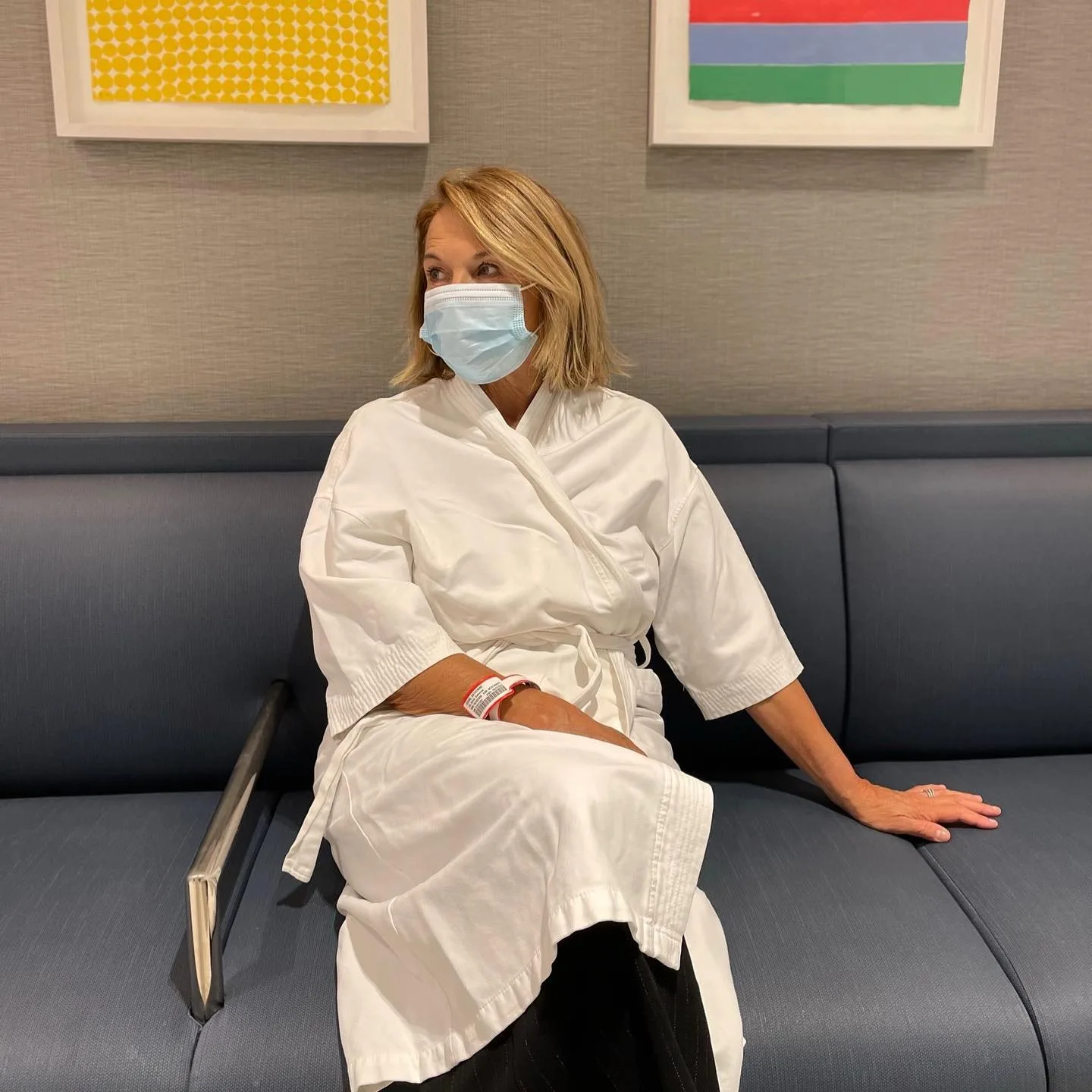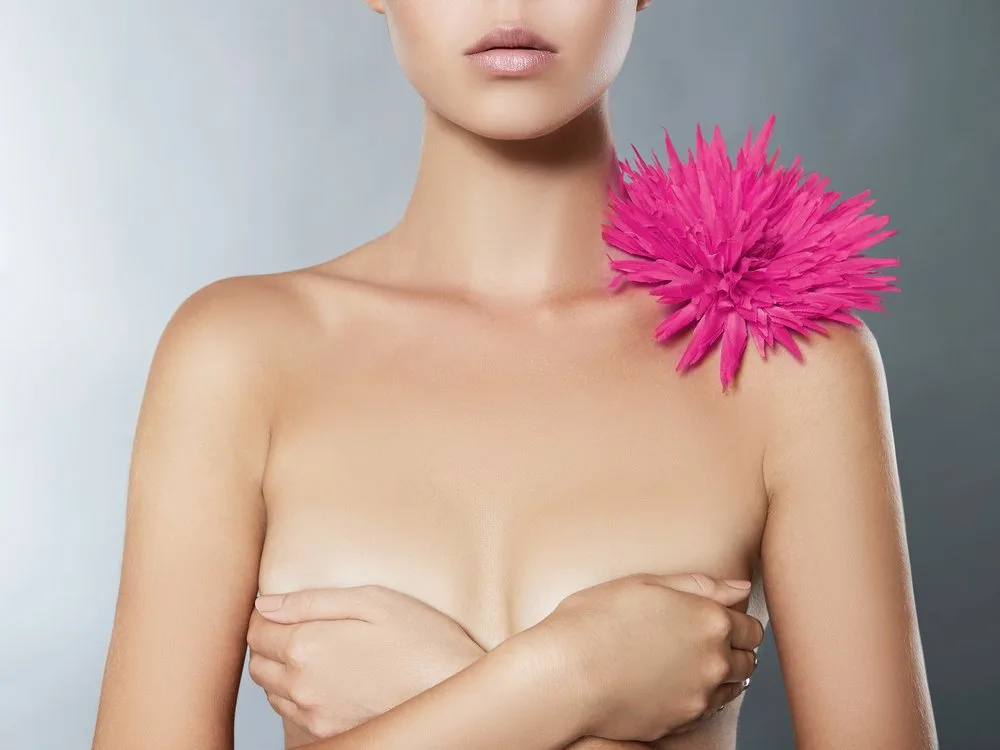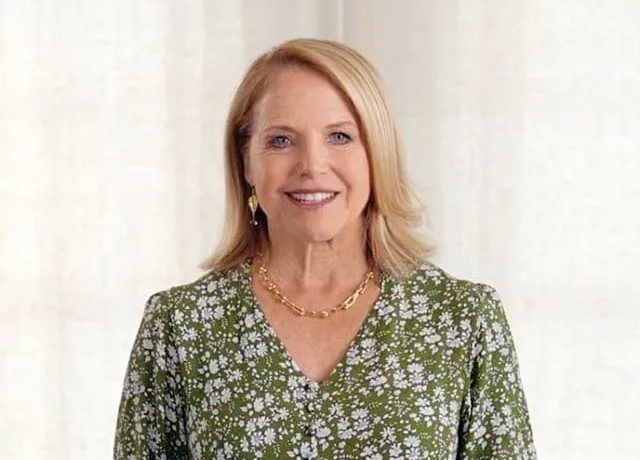In 1998, Katie Couric’s first husband, Jay Monahan, passed away from stage 4 colon cancer. Three years later, her sister Emily passed away from pancreatic cancer. Following these two deaths, Katie Couric has become a strong advocate for cancer awareness. The former Today show host uses her platform to highlight the importance of preventive cancer screenings.
In fact, the 65-year-old journalist recently revealed that it was during these screenings that she received her own cancer diagnosis.
“Every two minutes, a woman is diagnosed with breast cancer in the United States. On June 21st, I became one of them.
As we approach #BreastCancerAwarenessMonth, I wanted to share my personal story with you all and encourage you to get screened and understand that you may fall into a category of women who needs more than a mammogram.” – Katie Couric
Upon revealing her cancer diagnosis, the mom of two also revealed that she had dense breasts — which doctors believe can increase one’s risk of developing breast cancer.
What does having dense breasts mean?

katiecouric/instagram
Speaking to the New York Times, Dr. Laura Esserman, director of the Breast Care Center at the University of California, San Francisco, revealed that around half of women aged 40 years or older have dense breast tissue.
So what exactly are dense breasts? According to the Centers for Disease Control and Prevention (CDC), breast density refers to the amount of fibrous and glandular tissue in a woman’s breasts compared with the amount of fatty tissue in the breasts, as seen on a mammogram.
A mammogram will reveal how dense your breasts are, with the CDC adding that breast density will then be assigned to one of the following four categories:
- The breasts are almost entirely fatty (about 10% of women) – low density
- A few areas of dense tissue are scattered through the breasts (about 40% of women) – low density
- The breasts are evenly dense throughout (about 40% of women) – high density
- The breasts are extremely dense (about 10% of women) – high density
Breast density and breast cancer
The CDC reports that women with dense breasts have a higher chance of getting breast cancer, however, they are not more likely to die from breast cancer than patients with non-dense breasts. Additionally, dense breast tissue can make it harder for radiologists to spot cancer on mammograms. This is because the tissues look white on a mammogram, just like a possible tumor.
Despite this, mammograms can still detect most breast cancers, even in those with dense breast tissue. Therefore, it’s important that you keep up with getting regular mammograms.
As for why dense breasts increase the risk for breast cancer, scientists aren’t entirely sure. One belief is that dense breasts contain more tissue, which means that more cells are likely to develop into abnormal cells.
Is breast density the biggest risk for breast cancer?
Yes, dense breasts can increase your risk for breast cancer. However, it’s not the biggest risk factor that you need to be worried about. Dr. William Dahut, chief scientific officer for the American Cancer Society, told the New York Times that age is the greatest risk for breast cancer.

photoagent/shutterstock
Additionally, risk factors include family history and genetics. Now while you can’t change these factors, you can reduce your risk for breast cancer by focusing on lifestyle factors. These include substance abuse, lack of exercise, and obesity.
Getting screened
Regardless of the density of your breasts, it is important to get screened for breast cancer every year. This is especially necessary if there exists a history of cancer in your family, and you are aged 40 or older.
It was during a routine mammogram that Katie Couric’s doctor realized something was off. He then requested a biopsy of a lump in her left breast, which we now know turned out to be cancer.
“Please get your annual mammogram. I was six months late this time. I shudder to think what might have happened if I had put it off longer. But just as importantly, please find out if you need additional screening.” – Katie Couric
Living with breast cancer
Following the diagnosis, Katie Couric underwent a lumpectomy on July 14 before beginning radiation therapy on September 7. She will soon be prescribed medication that she will need to take for five years.
Last week was her final round of radiation and while her left breast looks like she’s been “sunbathing topless”, she’s doing well. She’s incredibly appreciative and grateful for where she currently is, and she’s continuing her fight to raise awareness of the disease.
“I can’t tell you how many times during this experience I thanked God that it was 2022. And how many times I silently thanked all the dedicated scientists who have been working their asses off to develop better ways to analyze and treat breast cancer.
But to reap the benefits of modern medicine, we need to stay on top of our screenings, advocate for ourselves, and make sure everyone has access to the diagnostic tools that could very well save their life.”
References
- https://www.cancer.org/cancer/breast-cancer/screening-tests-and-early-detection/mammograms/breast-density-and-your-mammogram-report.html
- https://www.cdc.gov/cancer/breast/basic_info/dense-breasts.htm
- https://www.nytimes.com/2022/09/28/well/live/dense-breasts.html
MAIN IMAGE CREDIT: katiecouric/instagram



![women [longevity live]](https://longevitylive.com/wp-content/uploads/2020/01/photo-of-women-walking-down-the-street-1116984-100x100.jpg)










